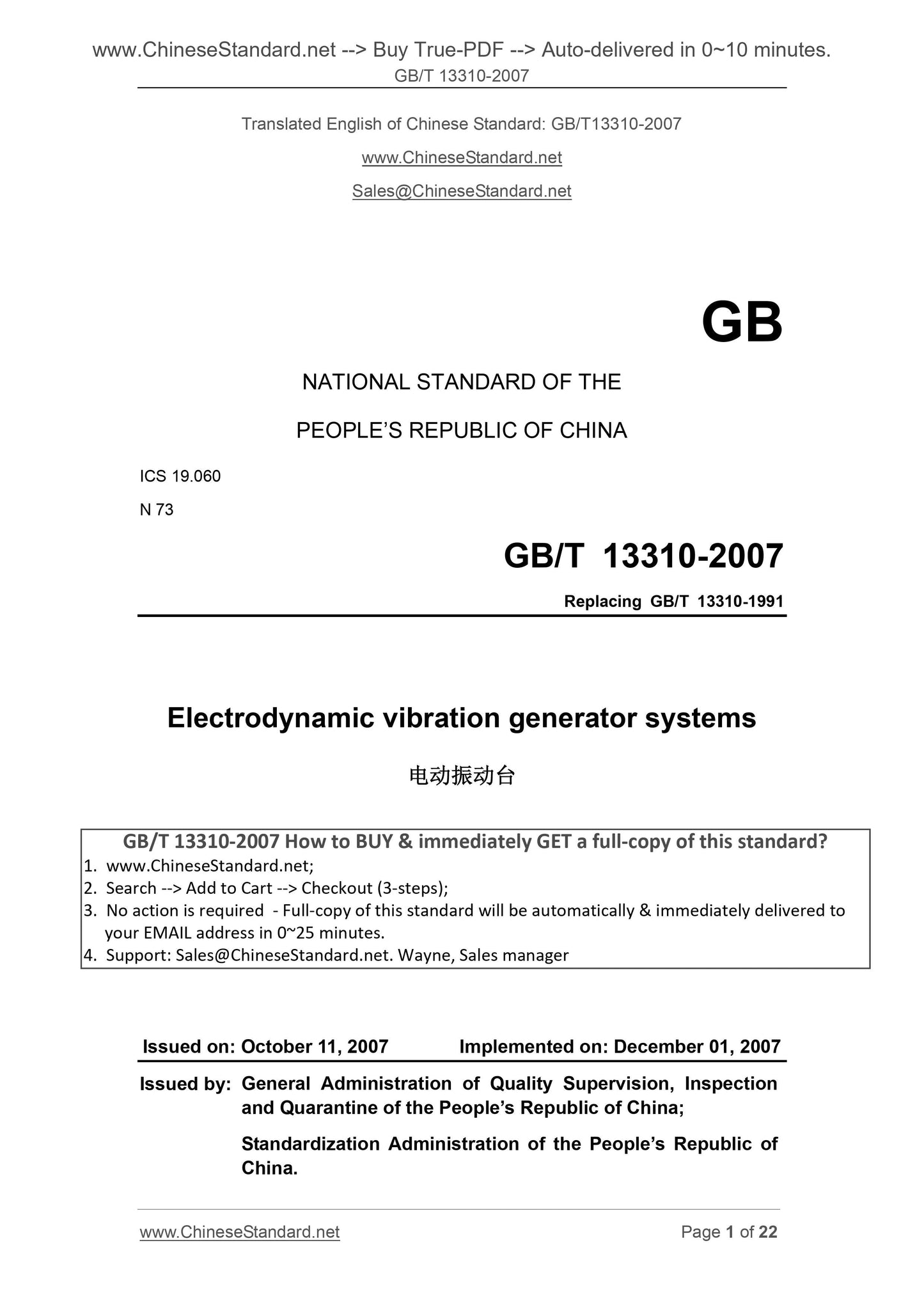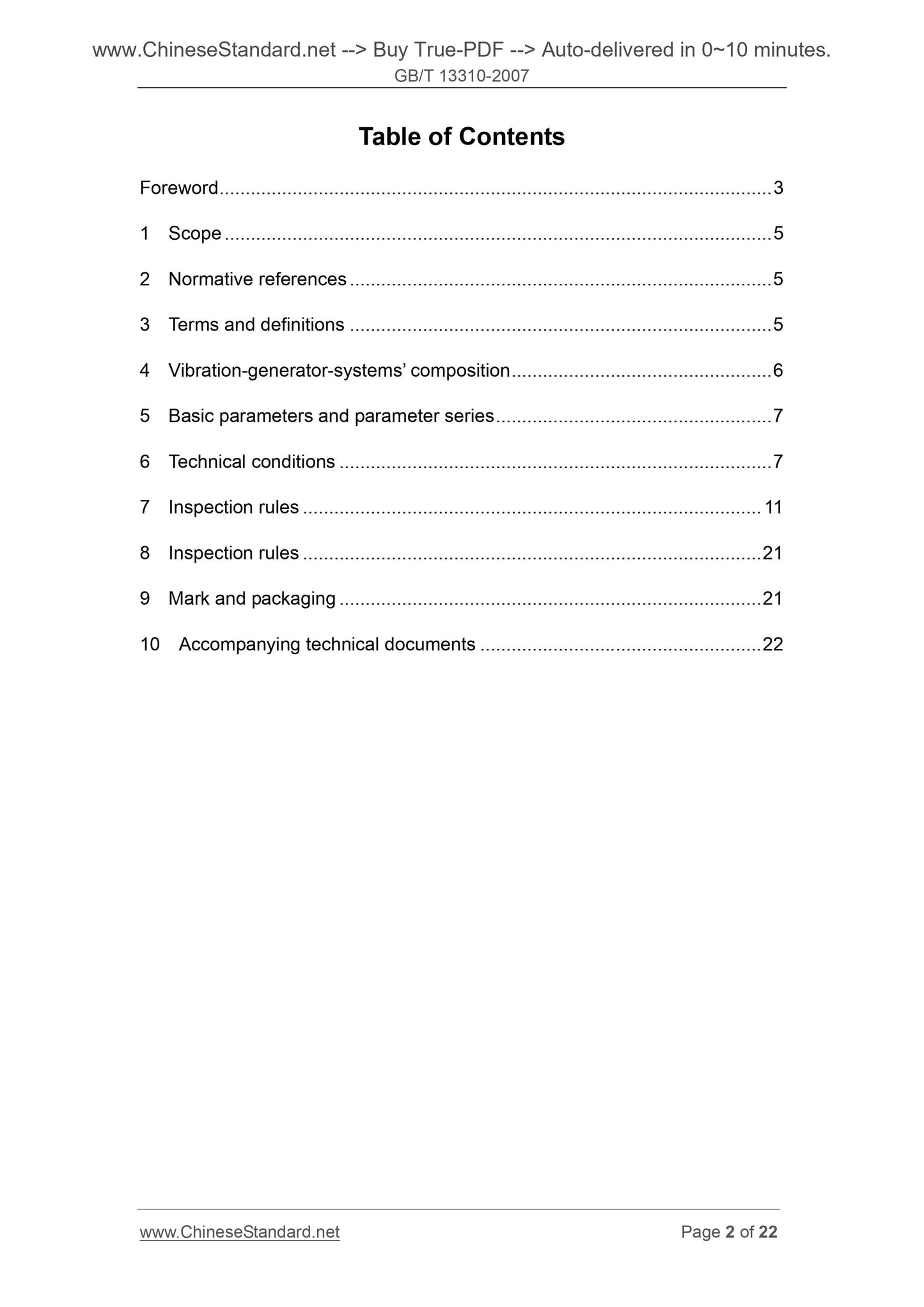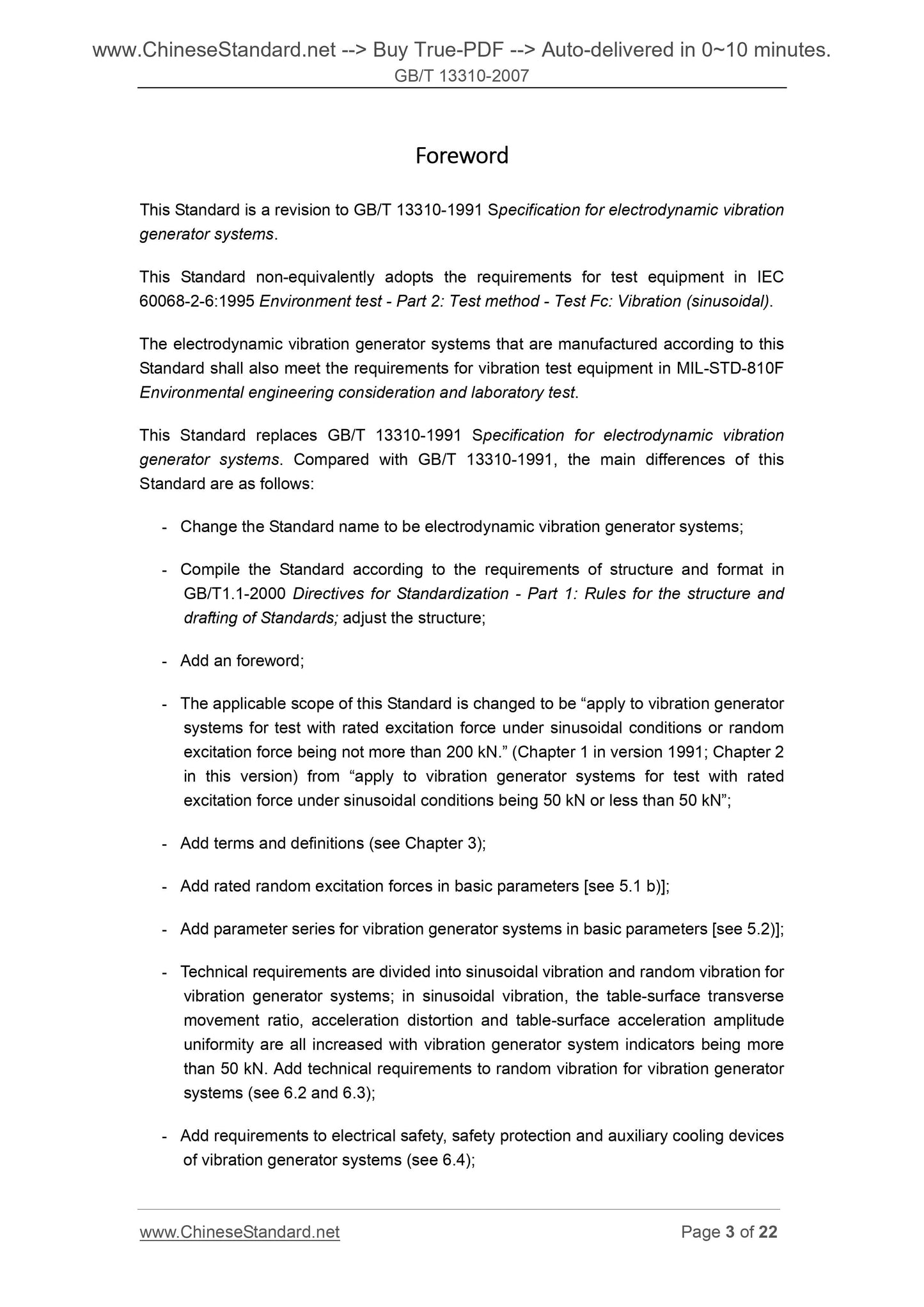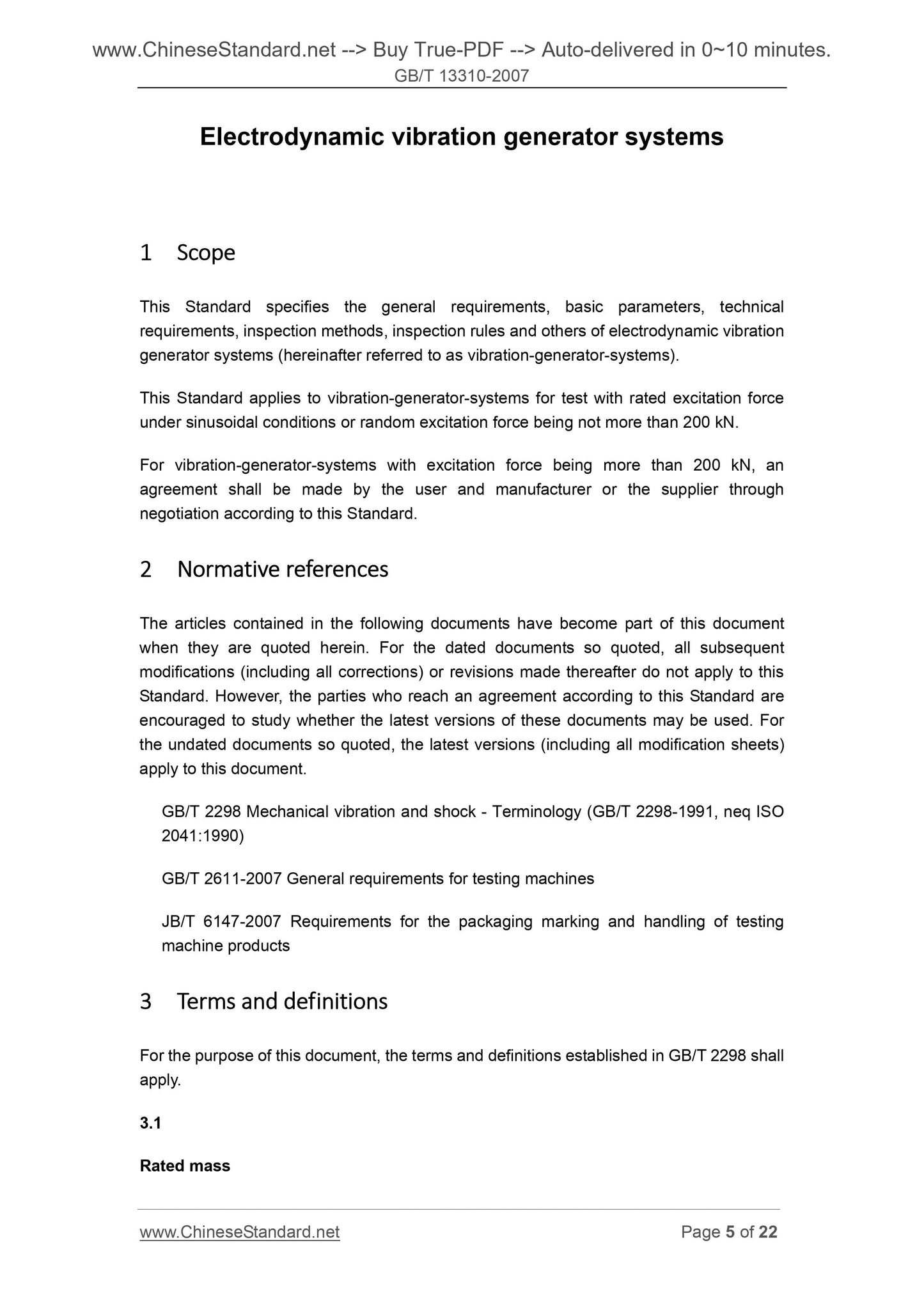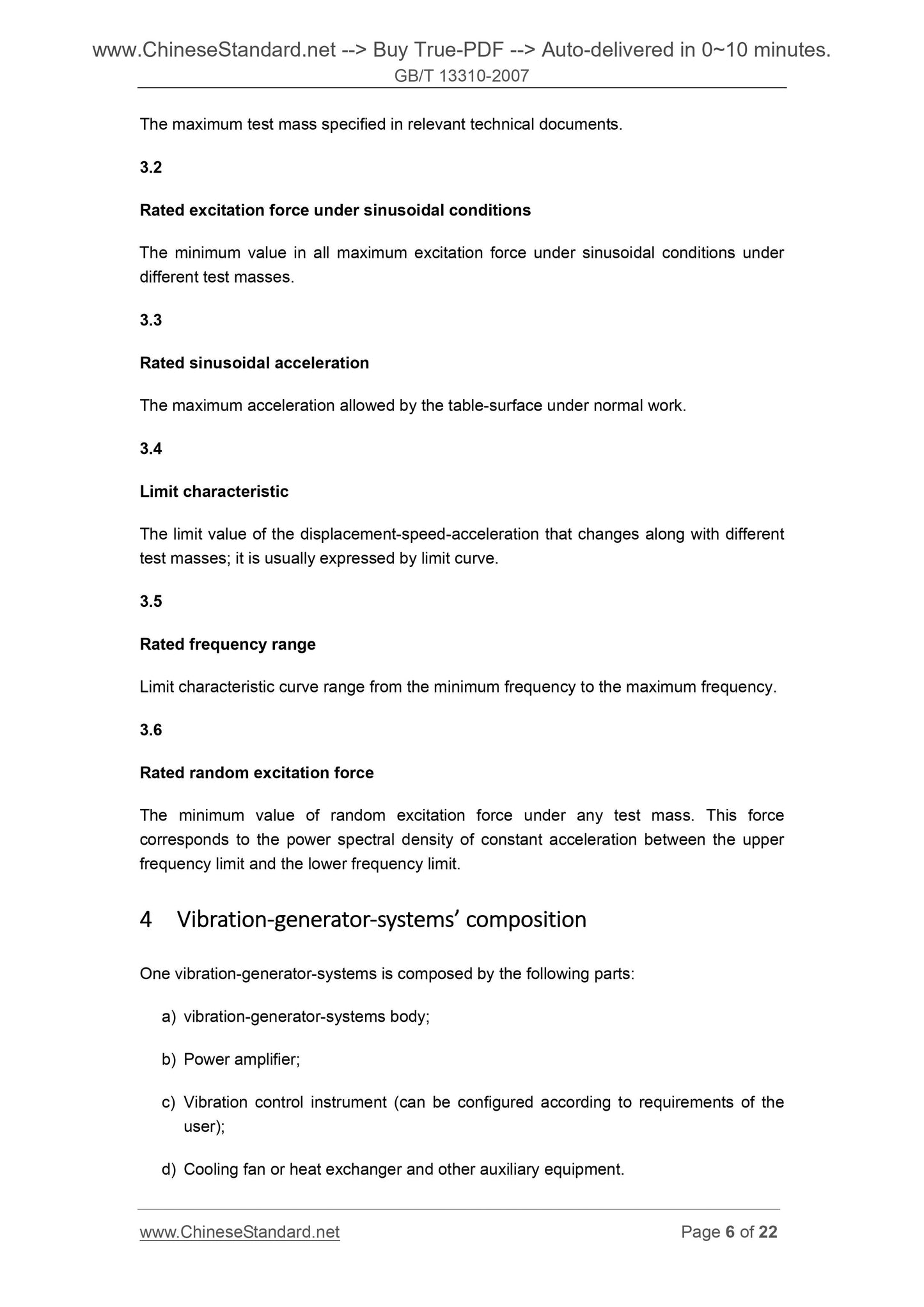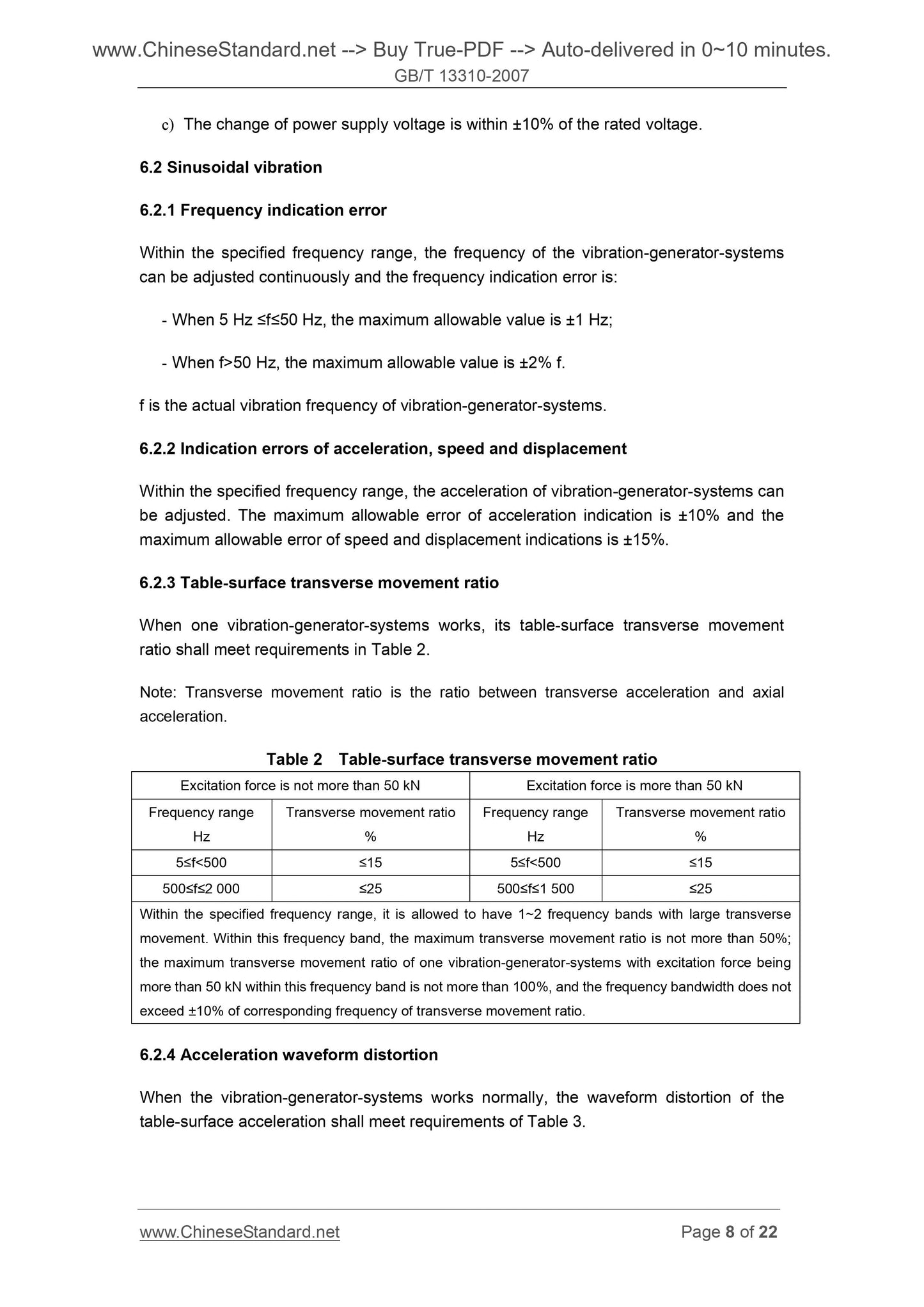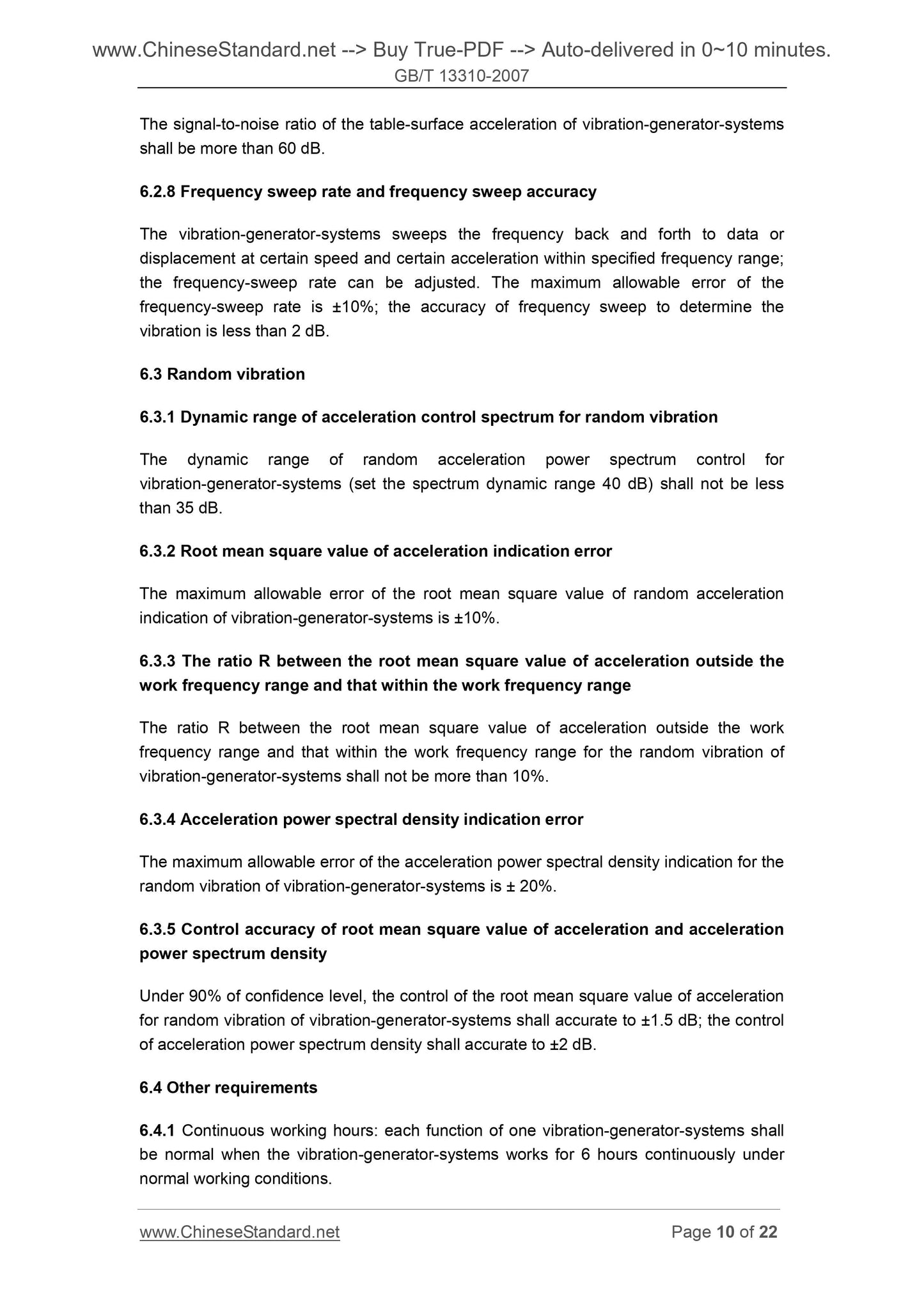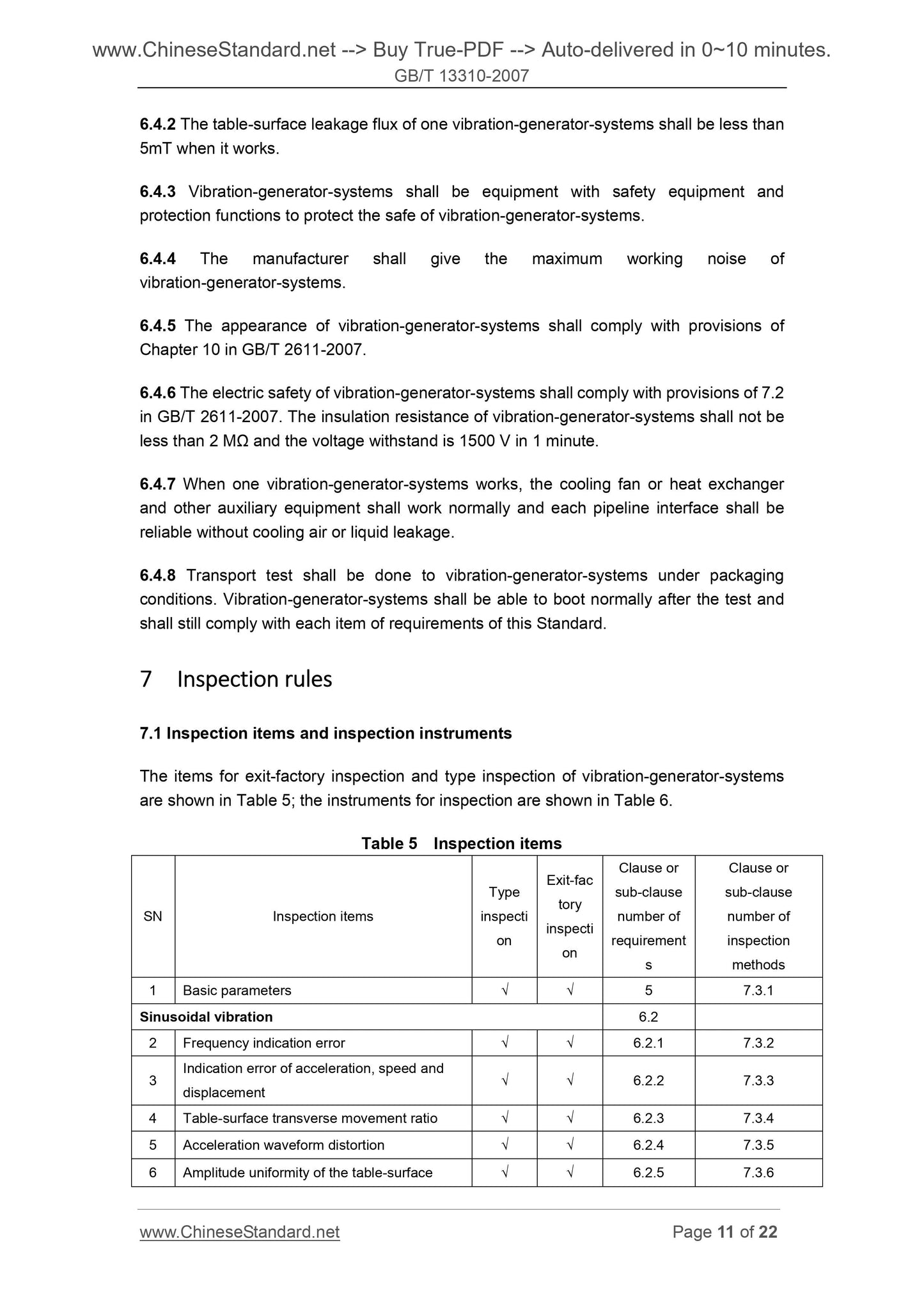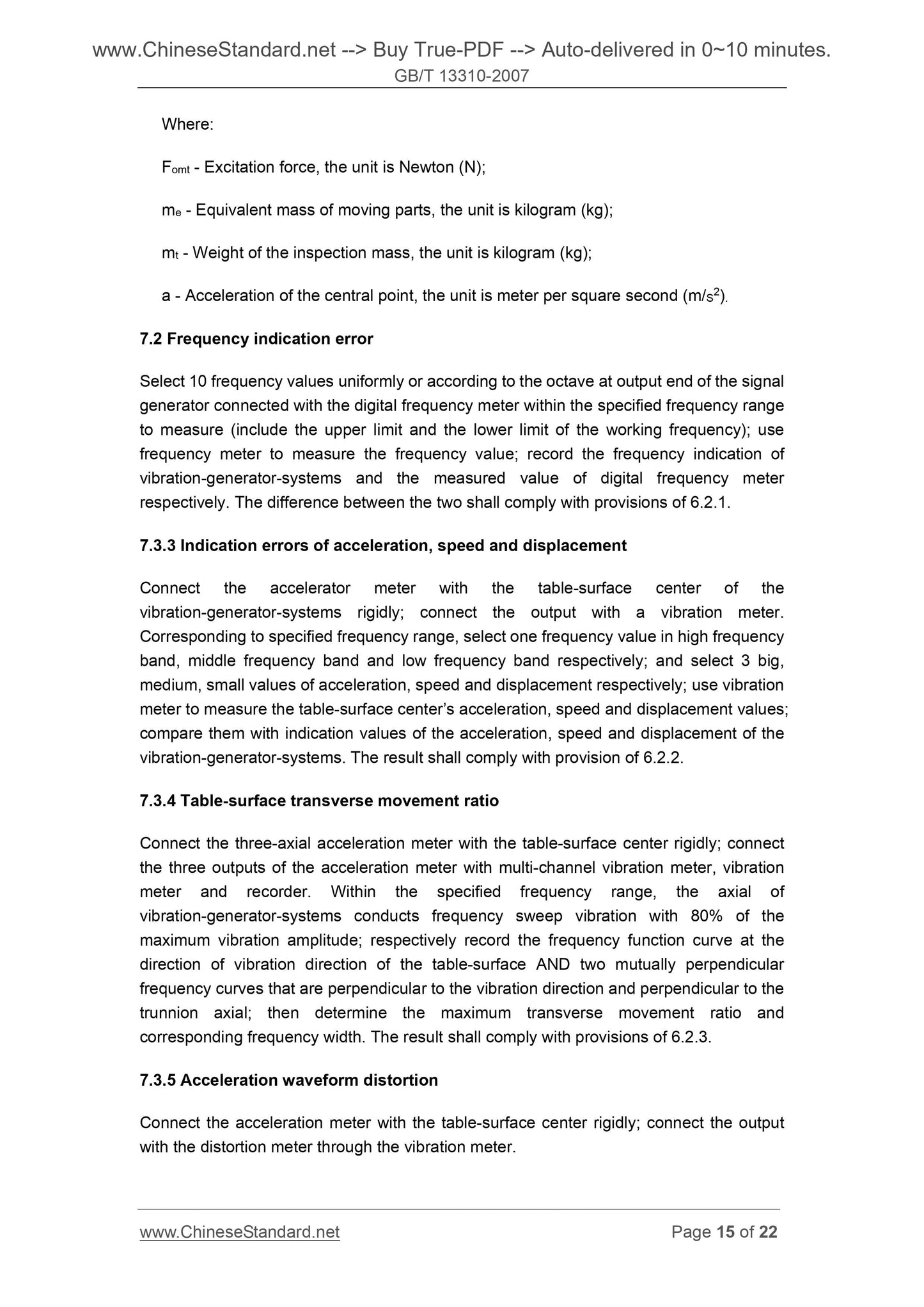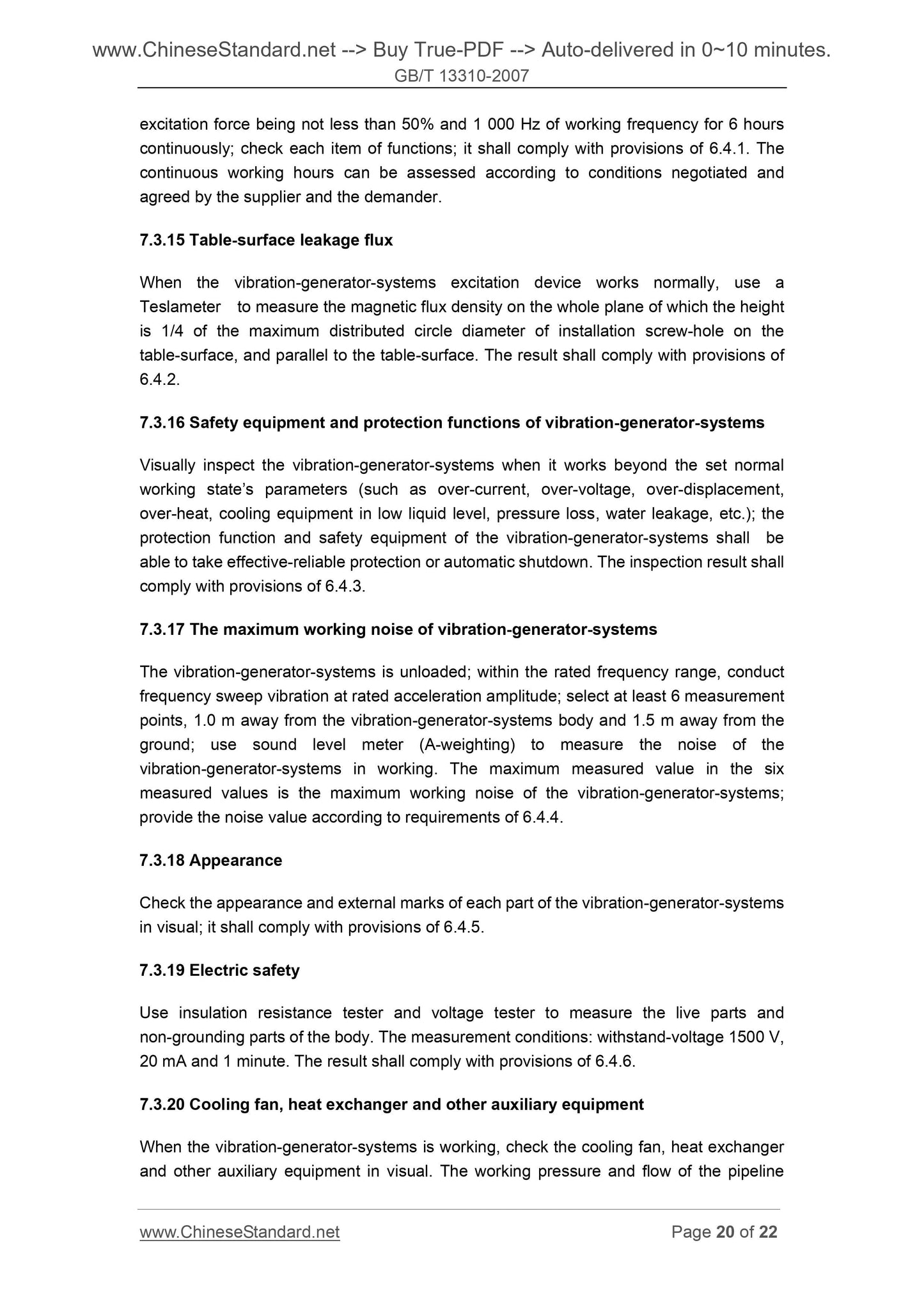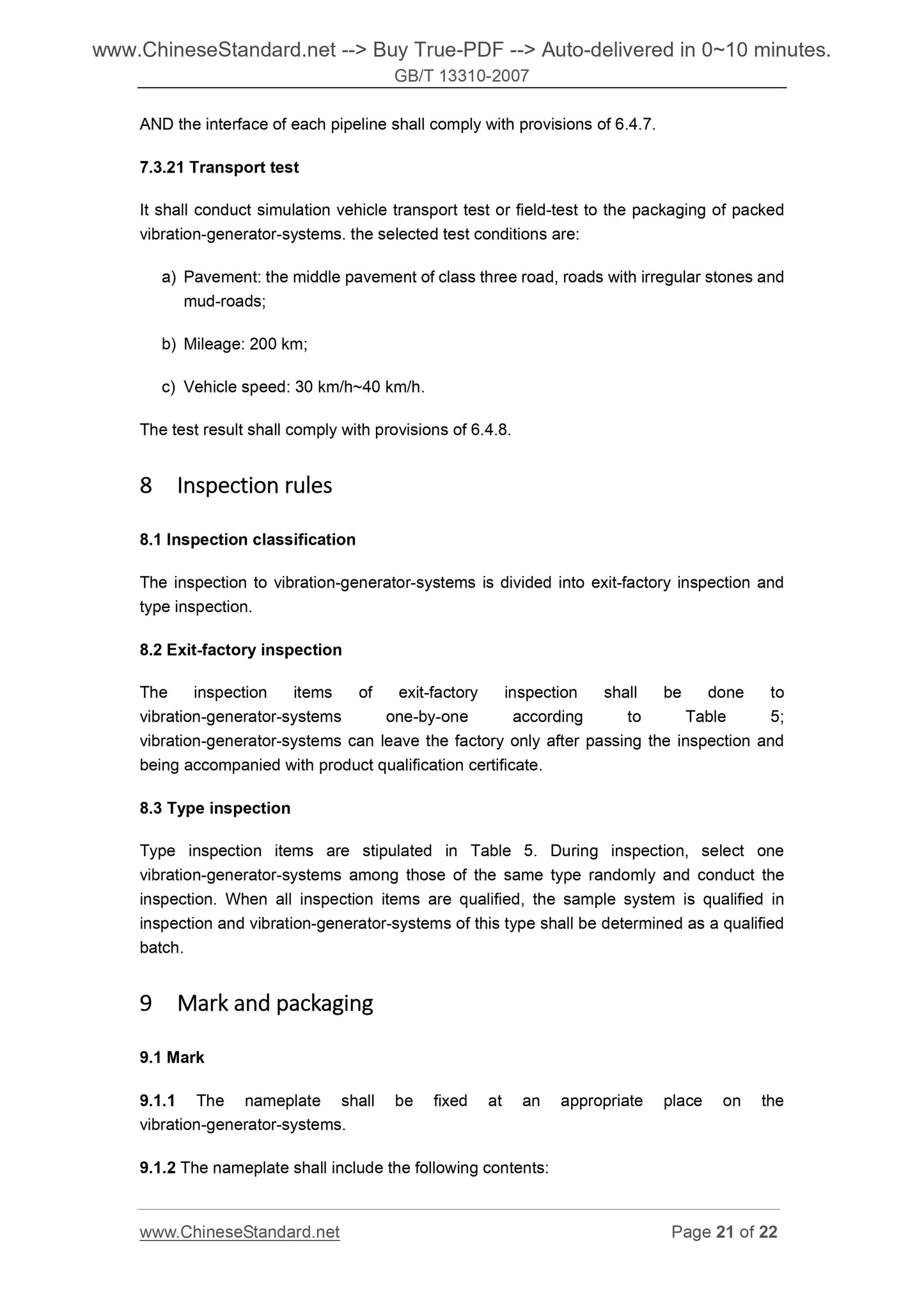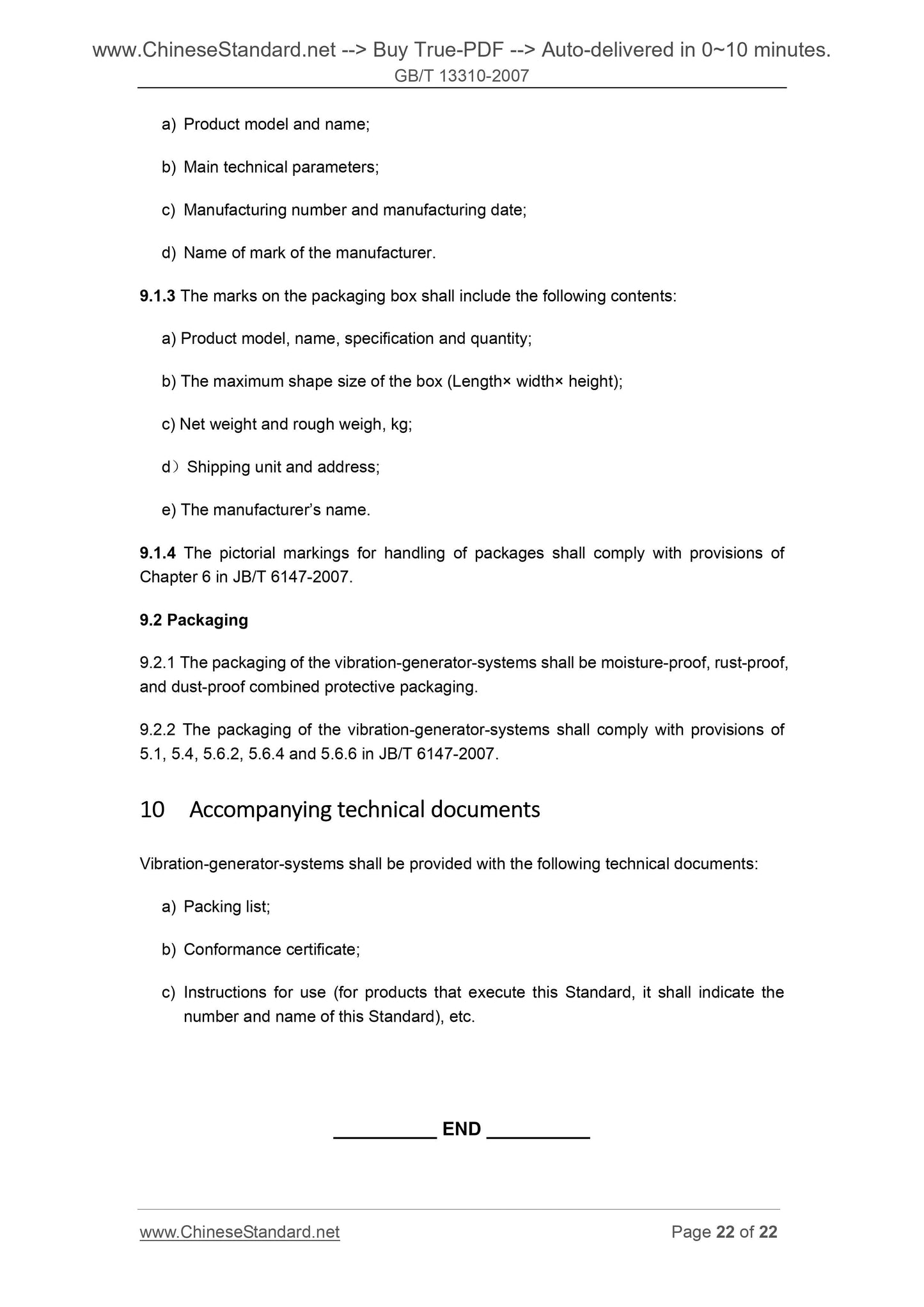1
/
of
12
www.ChineseStandard.us -- Field Test Asia Pte. Ltd.
GB/T 13310-2007 English PDF (GB/T13310-2007)
GB/T 13310-2007 English PDF (GB/T13310-2007)
Regular price
$140.00
Regular price
Sale price
$140.00
Unit price
/
per
Shipping calculated at checkout.
Couldn't load pickup availability
GB/T 13310-2007: Electrodynamic vibration generator systems
Delivery: 9 seconds. Download (and Email) true-PDF + Invoice.Get Quotation: Click GB/T 13310-2007 (Self-service in 1-minute)
Newer / historical versions: GB/T 13310-2007
Preview True-PDF
Scope
This Standard specifies the general requirements, basic parameters, technicalrequirements, inspection methods, inspection rules and others of electrodynamic vibration
generator systems (hereinafter referred to as vibration-generator-systems).
This Standard applies to vibration-generator-systems for test with rated excitation force
under sinusoidal conditions or random excitation force being not more than 200 kN.
For vibration-generator-systems with excitation force being more than 200 kN, an
agreement shall be made by the user and manufacturer or the supplier through
negotiation according to this Standard.
Basic Data
| Standard ID | GB/T 13310-2007 (GB/T13310-2007) |
| Description (Translated English) | Electrodynamic vibration generator systems |
| Sector / Industry | National Standard (Recommended) |
| Classification of Chinese Standard | N73 |
| Classification of International Standard | 19.060 |
| Word Count Estimation | 14,171 |
| Date of Issue | 2007-10-11 |
| Date of Implementation | 2007-12-01 |
| Older Standard (superseded by this standard) | GB/T 13310-1991 |
| Regulation (derived from) | China Announcement of Newly Approved National Standards No. 11 of 2007 (total 111) |
| Issuing agency(ies) | General Administration of Quality Supervision, Inspection and Quarantine of the People's Republic of China, Standardization Administration of the People's Republic of China |
| Summary | This standard specifies the electrodynamic shaker (hereinafter referred to as vibration table) the general requirements, the basic parameters, technical requirements, test methods and inspection rules. This standard applies to the rated sinusoidal excitation force or random excitation force is not greater than 200 kN test shaker. Centrifugal force is greater than 200 kN shaking table appropriate for the user and the manufacturer or supplier negotiation with reference to the standard agreement. |
Share
